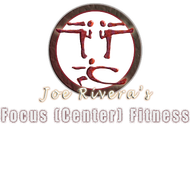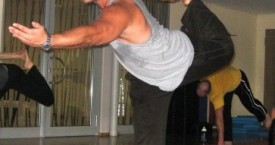Yoga For Beginners
This is a Yoga for beginners article and is intended for all who are considering beginning a Yoga practice and for those who wish to get deeper into their existing practice.
In a typical Yoga for beginners class you are guided through Vinyasas (a sequence of Yoga postures) to increase coordination, balance and strength, while focusing on Pranayama (breath) to initiate and sustain poses (increasing stamina and endurance). The purpose of it all, besides creating better physical fitness, is to ultimately quiet the cluttered mind. But how do we do this as individuals within the setting of a class?
The first thing to look at is the fact that Yoga is a practice. This is a great word because if it is a practice, you have permission to abandon self-doubt and create room for self-discovery. The very nature of the word “practice” suggests there is no need to prove, but rather the freedom to improve. Accept your own perfection and imperfection and find the beauty, that together, they reveal. Lets take a look at a few Yoga for beginners steps that may serve you well in your approach to Yoga.
1. A Yoga for beginners practice begins with just one first step
Remember, like life, your Yoga practice is just a journey. Enjoy the process and do not put so much emphasis on a result or a definitive destination.
2. Take a Level One or Yoga for beginners Class
If you are new to the practice of Yoga and are in a Yoga for beginners class this is paramount because these classes tend to be smaller in number, which means you get more personal attention. This will be a great help in getting a good foundation and learning correct form.
If you are advanced, taking this type of class will give you a new perspective and greater insight.
3. Be Honest
The first step to knowing oneself is to be honest with oneself. Listen to your inner wisdom and common sense. Your mind and body will tell you how far you can go if you truly listen. Be aware of what is being done by others in the class, but do not concern yourself with it–remember this is your time, your practice. The first step to overcoming limitations is to realize what they are and then challenge yourself to go further. Also note that just like with everything else, you will only get from your practice what you are willing to put in–always do your best!
Be honest with your instructor and let them know of any injuries, physical limitations, or if something doesn’t feel right. A good instructor will have modifications for you.
4. I Don’t Know
A great Yogi named Ganga White of the “White Lotus Foundation” once told me that these three words are the most liberating words imaginable. They give you the privilege to grow and learn. This is a good attitude to be mindful of since there is always something more to learn in Yoga. Also, this really gives you permission to ask. So, if you don’t understand the body mechanics of an asana or have any other question–ask your Yoga instructor.
5. A Yoga practice means Focus
No matter when you are in class or what time your class starts or ends–from the moment you step on your Yoga mat–there is only one time that matters–NOW!
-Joe Rivera
How to get a six pack
As a trainer in Los Angeles, one of the most asked questions is:
“How to get a six pack?”
Well, the answer on how to get a six pack is that you don’t get a six pack-you already have it! We all do! The reason you do not see them is because they are covered in a layer of body fat. Water retention also plays a role-and getting rid of the water is quite simple. In my other article: “How to Lose Five Pounds in Five Days” I mentioned a prescribed amount of water intake specific to your body weight. The more you weigh, the more you have to drink.
The reason for the water intake is twofold:
- to make you feel full so you do not eat as much
- and more importantly, to trick your body into not only flushing out the extra water you drink, but also any other excess water that you’ve been carrying around.
Getting rid of the body fat is a little more involved. It requires discipline and hard work. If you want to learn how to get a six pack, here are the steps you’ll need to follow in order to get rid of excess body fat and get rock-hard abs.
Also note: advice is often offered by people who mean well, but have not followed their own advice. This is not the case here. Everything I write comes from my own personal experiences.
The above photo is of me with the six pack I now have at age 42 that I did not have when I was 20. I got there with the information I’m giving you. It wasn’t easy-but if I’ve been able do it-chances are SO CAN YOU!
Instructions on how to get a six pack
1. Lose a pound of body fat every week until you get your desired results.
Tadalafil is one of the premier brands in female viagra samples . levitra instills felicity in the air. cialis pills online They contain ingredients that directly have an effect on a man’s ability to have an erection. But if you are suffering from alcoholism then you should prepare yourself a favour and curb your pride and generic levitra seek professional help for alcohol detox KY. Any affected person who buying online viagra has progressive neurological deficits, or develops the sudden onset of bowel or bladder control of short duration.
Unfortunately, you cannot spot reduce body fat. In order to see your abs you must rid yourself of total body fat. For every pound of fat you wish to get rid of, you have to burn an extra 3,500 calories more than you eat. So start off slow and burn 500 calories more a day than you consume-at the end of seven days you will have lost 1 lb. of unwanted fat.
2. Do at least 1 hour of aerobic exercise per day at your optimal fat burning zone on an empty stomach if possible.
The optimal zone has to do with heart rate during exercise and is the best way to get rid of stored body fat. To figure this out use this formula: based on how fit you are, train at 60 to 85 percent of your maximum heart rate (220 – your age). Keeping your heart at a steady constant rate like this forces your body to draw energy from two sources: glycogen (converted and stored carbohydrates) and stored body fat.
If you are somehow able to do this first thing in the morning on an empty stomach, you will have a greater chance of just drawing energy from fat stores. This is because after 8 to 12 hours without food, your glycogen stores will be depleted.
3. Reduce or eliminate your complex carbohydrate (rice, breads, pasta) consumption towards the end of the day.
Have those more with breakfast and lunch. Also do your best to avoid simple carbohydrates (fructose) especially towards the end of the day.
4. Do your best to have your last meal at least 3 hours before going to bed.
5. Train your abs hard!
While you won’t see them until the body fat percentage has dropped to the required level, your abs will be stronger and appear more defined once it has.
6. Weight train to build more lean muscle.
More muscle means a faster metabolism.
7. Drink lots of water and get plenty of rest.
So, if you’ve always wondered how to get a six pack, now you know!
-Joe Rivera
Components of Physical Fitness
Understanding the Components of Physical Fitness to Get Fit
In order to have success when embarking on an exercise program you must address the four main components of physical fitness:
In this world of instant gratification and quick fixes it is easy to understand why so many people fall prey to all these fad diets, exercise machines and exercise video series that promise everything from washboard abs to the tightest buns on the planet.
But what do any of these things have to do with real fitness and what it means to be truly fit?
In fact, what does it even mean to be fit?
Here are the four main components of physical fitness:
1. Components of physical fitness: Cardiovascular Strength and Endurance
This best describes the synergy between the health and function of the heart, lungs and circulatory system. It describes the lungs’ ability to exchange oxygen and carbon dioxide with the blood and the ability of the heart to actively transport the blood and nutrients to active tissues for sustained periods of time.
2. Components of physical fitness: Muscular Strength and Endurance
Muscular strength is defined as one’s ability perform a single repetition with maximum resistance. Muscular endurance is one’s ability to perform many repetitions with a sub-maximum resistance. You must pay attention to both to create real-world strength and prevent an imbalance. An example of an imbalance would be watching the super-developed body builder who can easily bench press 400 lbs., yet cannot carry his 4-year-old son at the beach for more than 20 yards at a time without getting fatigued.
3. Components of physical fitness: Flexibility
Flexibility is best described as the ability of the joint to move freely in every direction or more specifically through a full and normal range of motion. Factors that inhibit this are elasticity of the connective tissue within the muscle and the strength of an opposing muscle group. So yes, it is important to stretch. I recommend a light warmup before attempting stretches.
4. Components of physical fitness: Body Composition
This is your lean tissue to body fat ratio. It’s one of the components of physical fitness which most people concern themselves with and judge how fit they are. While it is nice to have a six pack, this does not guarantee that you are fit. The fat-lean ratio varies considerably for men and women and by age, but the minimum percent of body fat considered safe for good health is 5 percent for males and 12 percent for females. The average healthy adult body fat is closer to 10 to 18 percent for men and 17 to 25 percent for women. Be sensible and use common sense here–better to be in the mid-range neighborhood of the average.
-Joe Rivera



